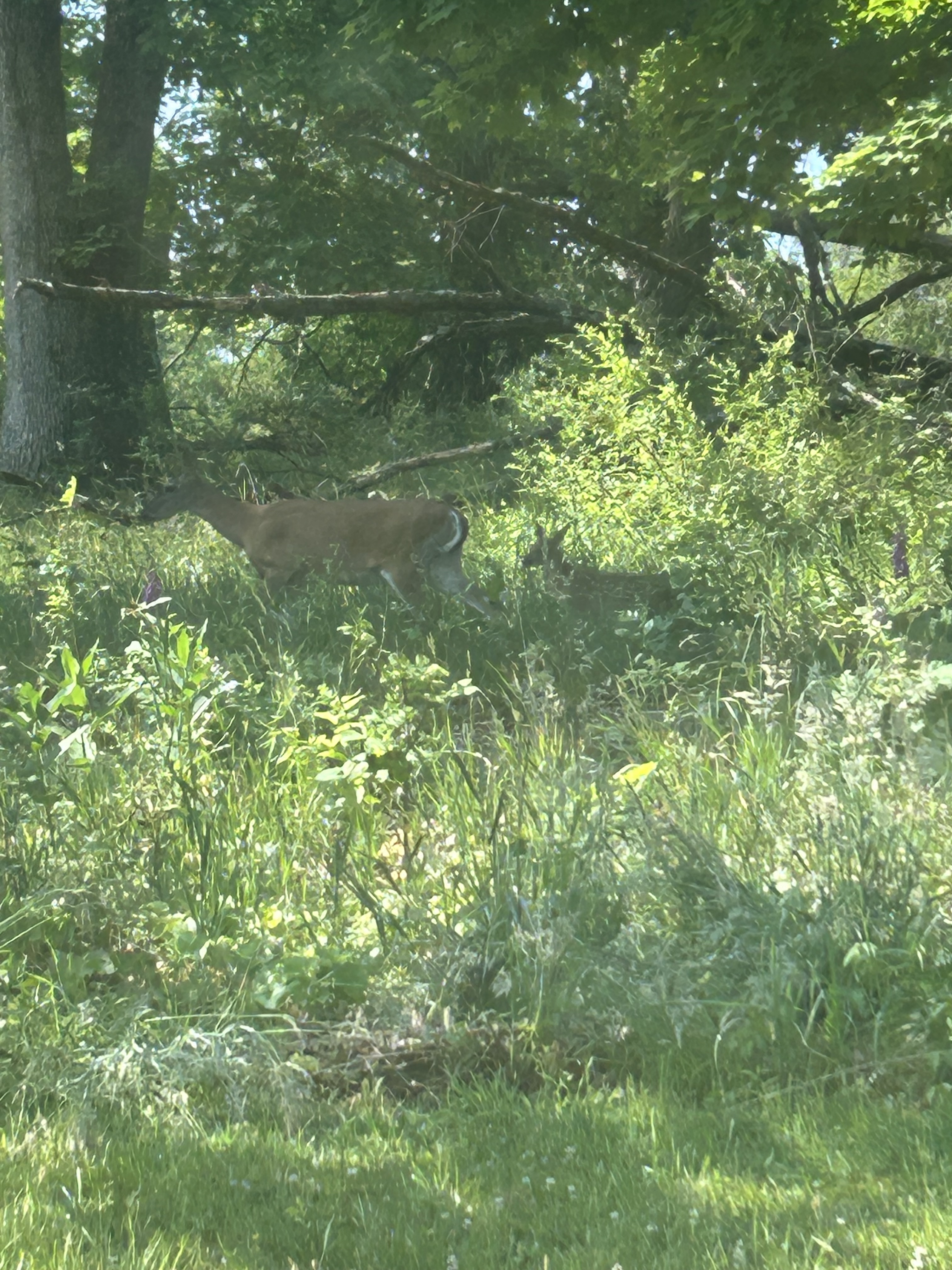Life is easier without competition.
Without it, there is no need to get up early on Saturday morning to be first in line to buy asparagus at the farmers market before it sells out or break the bank trying to outbid other buyers on your dream home.
Job interviews, college admissions, the lottery! Less competition greases the skids to happiness.
Predation is one place where competition is detested. I’d be willing to bet that bears, coyotes, and bobcats do not like one another. Yogi, Wile E., and Fluffy are all trying to stay alive and having to outfox each other to nab dinner is a real drag. They have learned to get along mostly by avoiding each other – which can be seen in the way they hunt. Luck, stalk and pounce, ambush strategies almost guarantee they will stay out of each other’s way.
You know who else doesn’t like competing for prey? People.
Hunters have frowned upon their furry counterparts since time began. Pennsylvania has conducted not one but two fawn studies because some thought predators were killing too many.

Let’s get a couple of things out of the way.
First, deer are a prey species. They do not hunt other critters to sustain themselves. They are herbivores consuming plants which gets turned into tasty venison for someone higher up the food chain. Wolves, bears, alligators, mountain lions, coyotes, and bobcats will all eat a deer. Even killer whales can’t resist venison for lunch! Eating and getting eaten is a deer’s job and they are really good at it.
Second, predators, like the above mentioned, eat deer. It is no secret, and no one is denying deer die daily as a result.
What does become a point of contention is when someone declares that non-human predators are eating “too many” deer? This is where things get uncomfortable because “too many” is often in the eye of the beholder.
Until about 12,000 years ago, all human practiced hunting-gathering. This culture was the only way of life until the Neolithic Revolution. That’s when society began the shift to agriculture and settlement.
What does the Stone Age have to do with deer and predation?
This change marked the beginning of the world as we know it today with cities and towns. Our agricultural history has reinforced the need for maximizing yield to support the growing population. But not everything fits this model.
Applying the agricultural logic to our hunter-gather ancestry means fewer predators equals increased wild animal abundance. This makes perfect sense and marries those chapters in our evolutionary history quite nicely.
Unfortunately, maximizing a crop yield or milk production is different than managing wildlife. Because for every action we take to maximize deer numbers Mother Nature kicks in the ecological equivalent of Newton’s Third Law. There is going to be some sort of reaction elsewhere in the system.
Biology, anthropology, and physics all in one post – I surprise myself sometimes!
Humans were successful in exterminating wolves and mountain lions from much of their historic range, including Pennsylvania, in the quest to increase deer among other critters. As a result, we now have coyotes.
Coyotes have been expanding their range for the last 65 years. They have finally reached the Atlantic Ocean – a far cry from the open, arid country of the West. Their presence in eastern landscapes is relatively new.
Some see coyotes as the downfall of their favorite species.
Are coyotes “death, the destroyer of [deer] worlds”?
Thankfully, we have science, be it biology, anthropology, or physics, to test hypotheses. If coyotes affect deer populations, we would expect to see population growth rates in deer decline after coyotes arrive on the scene. To test this, researchers assessed deer population dynamics following coyote colonization in 6 eastern states.
I won’t belabor this and cut right to the conclusion:
“We did not detect any negative association between colonizing eastern coyotes and white-tailed deer population growth rate across 6 eastern states over nearly a century. Instead, we documented a consistent rise in deer abundance simultaneous to coyote colonization across the region.”
I could end the post here with a gleeful “Ha, told you!” But this is science and science is not static and thrives on criticism.
Some researchers disagreed with its conclusions. The crux of their argument is that studies have shown localized impacts on deer populations as a result of coyote colonization and subsequent predation. Which is very true.
The authors of the original research responded to these concerns. They acknowledged the body of research which aptly points the finger at coyotes’ appetite for snack-sized deer. But that was not the question. The question investigated was “How have coyotes affected deer population growth from 1981 to 2014 across multiple states in the eastern United States?”
The short answer is “Local mortalities due to predation do not equal range‐wide predator control of prey numbers.”
A likely reason coyotes are not “death, the destroyer of [deer] worlds” is that coyote kill rates are not directed toward life stages with the highest impact on population growth. In other words, even when they kill a lot of fawns, high adult female survival cancels that out.

Hmmmm – where have I heard this before? I give you Elasti-Doe. Yes, our humble blog has discussed this very premise and come to the same conclusion.
Life may be “easier” without competition, but it wouldn’t be much fun. If it were, the MLB, NBA, NHL, and NFL would all be out of business, and the Olympics and the Tour de France would be placing ads for athletes.
When you buy your hunting license and head out the door this fall, filling that tag is not guaranteed. And if you come home empty-handed, it’s not because a bear, coyote, or bobcat ate a fawn. They aren’t your competition. You were bested by the master – the white-tailed deer.
-Jeannine Fleegle
Wildlife Biologist
PA Game Commission
